Our sustainable tips for ski touring with respect for nature
"Leave no trace other than your footprints - take nothing home except memories (and your waste)" - this credo applies to all outdoor sports. Ski touring through a freshly snowed-in winter landscape is a particularly good way to realize the meaning of this phrase. The layer of fresh snow makes nature look virtually untouched and the imprints we leave in the snow are clearly visible. But what other footprints do we leave behind? Transferred to our ecological footprint, the question is: how can we positively influence our eco-balance on a ski tour? We have put together a few tips for you on how you can make your ski tours as sustainable as possible.
«Leave no trace other than your footprints - take nothing home but memories (and your waste).»


Do the Self-check: How sustainable is your ski tour?
We want you to enjoy your ski tour and raise your awareness of your own behavior out in nature. You can quickly check how well you are already doing this by simply answering the following questions about travel, tour planning and the right behavior on tour and thinking about where you could possibly adjust your behavior.
Have fun with your self-check!
Getting there: How do I get to the mountains in an environmentally friendly way?
- What options are there for arriving by public transport?
- Could I - if only the car is an option - use a carpool or offer one myself?
- Parking spaces in winter sports regions are limited. Can I possibly combine my car journey with public transport?
Tour planning: How will the ski tour be as nature-friendly as possible?
- Do I know the recommendations of mountain sports associations such as the DAV tips "Naturally on Tour"?
- Is there a guiding concept in the touring area that I can follow?
- Where are game feeding areas and game reserves?
- Are there any other recommendations from nature conservation associations for the area?
- Do I absolutely have to go to a hotspot area or are there possibly more sensible alternatives?
At Ski tour: What can I consider on the way?
- Can I use existing ascent tracks and descents if possible?
- Does the existing track touch a sensitive area? If so, can I avoid it?
- Do I follow the recommendations of information boards and avoid protected areas?
- Does it have to be a night tour? Many animals are active at dusk and at night.
- Garbage check: Have I packed away everything that doesn't belong in the mountains?
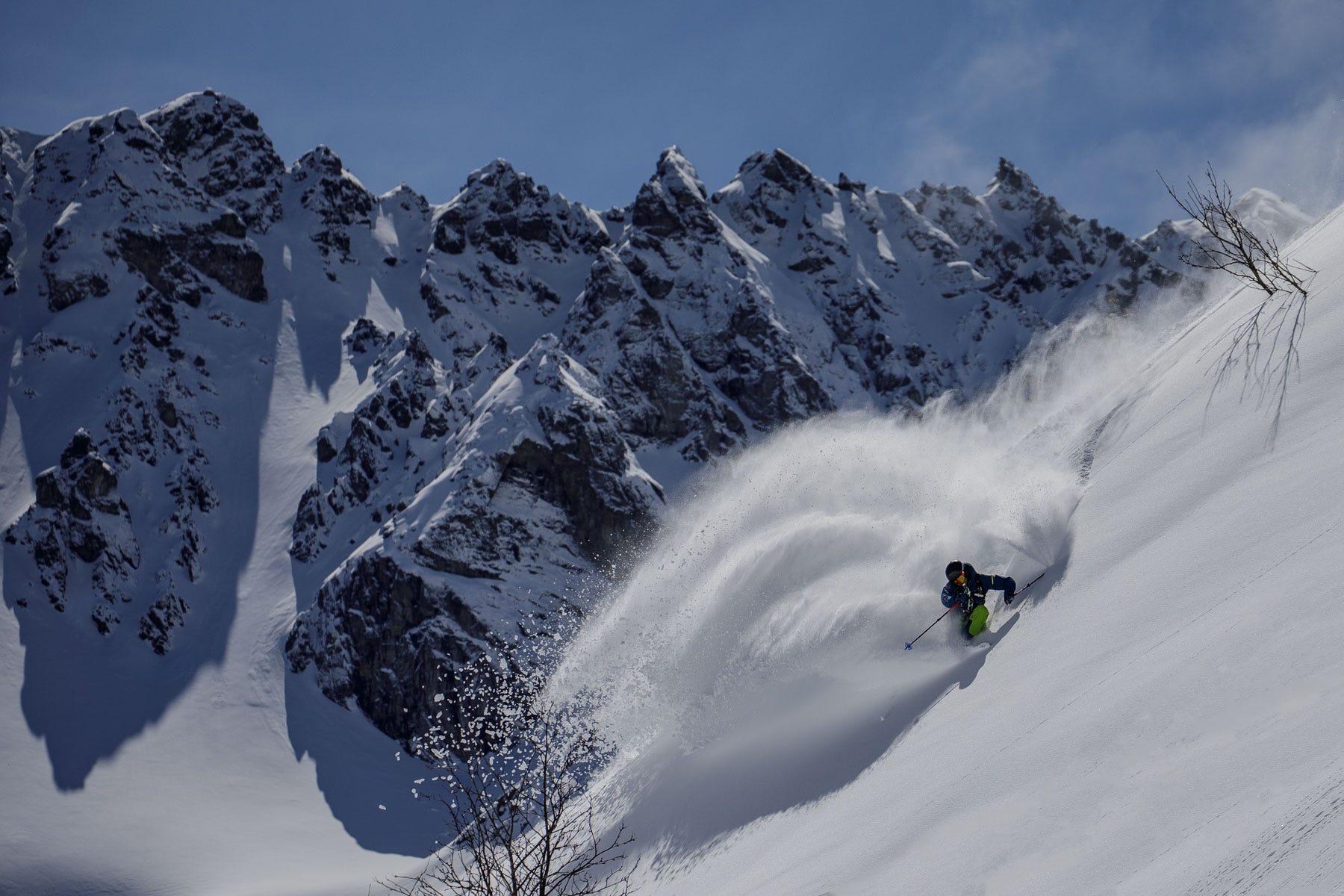

Ski touring in the balancing act between boom and sustainability
Ski touring is eventful, relaxing and you feel you are on the ecologically right side of winter sports. It's wonderful to make one's track upwards through the snowy mountain world, away from the hustle and bustle of the pistes and lift lines and stations, and let the anticipation of the descent grow:
«Arrive at the summit, take a deep breath and pause. And then, from the highest point feel the transition - a wonderful moment. After the descent through fluffy powder snow, enjoying the feeling of having left nothing but a trace in the snow.»
Ski touring is becoming increasingly popular and more and more recreational athletes* want to experience and enjoy winter sports and deep snow away from crowded slopes.
Once we zoom out of our freshly made track, we see ourselves moving in a natural area whose flora and fauna are sensitive to humans in winter due to snow and cold. We penetrate deeply into the ecological balance. We create a retreat to keep away from the noisy hustle and bustle, moving into a habitat whose inhabitants don't have the choice to simply go somewhere else if it gets too crowded and noisy for them. For wildlife, the proliferation of ski tourism in high alpine areas simply means stress - they are running out of places to retreat. This distress arises from the non-existence of trail commands.
Through considerate behavior when touring and preparatory avalanche courses, you protect nature and yourself.
The large number of winter sports enthusiasts also causes traffic and air pollution. The pollution of the landscape by garbage and personal residues goes hand in hand with this, as does a continuous and widespread pressure of use, which is no longer concentrated on a few kilometers of slopes and large parking lots.
Last but not least, avalanches triggered by ski tourers are also a problem. They are not only a danger for us personally, which we learn to avoid as best we can in avalanche courses: avalanches are also always a direct danger for other ski tourers and for animals.
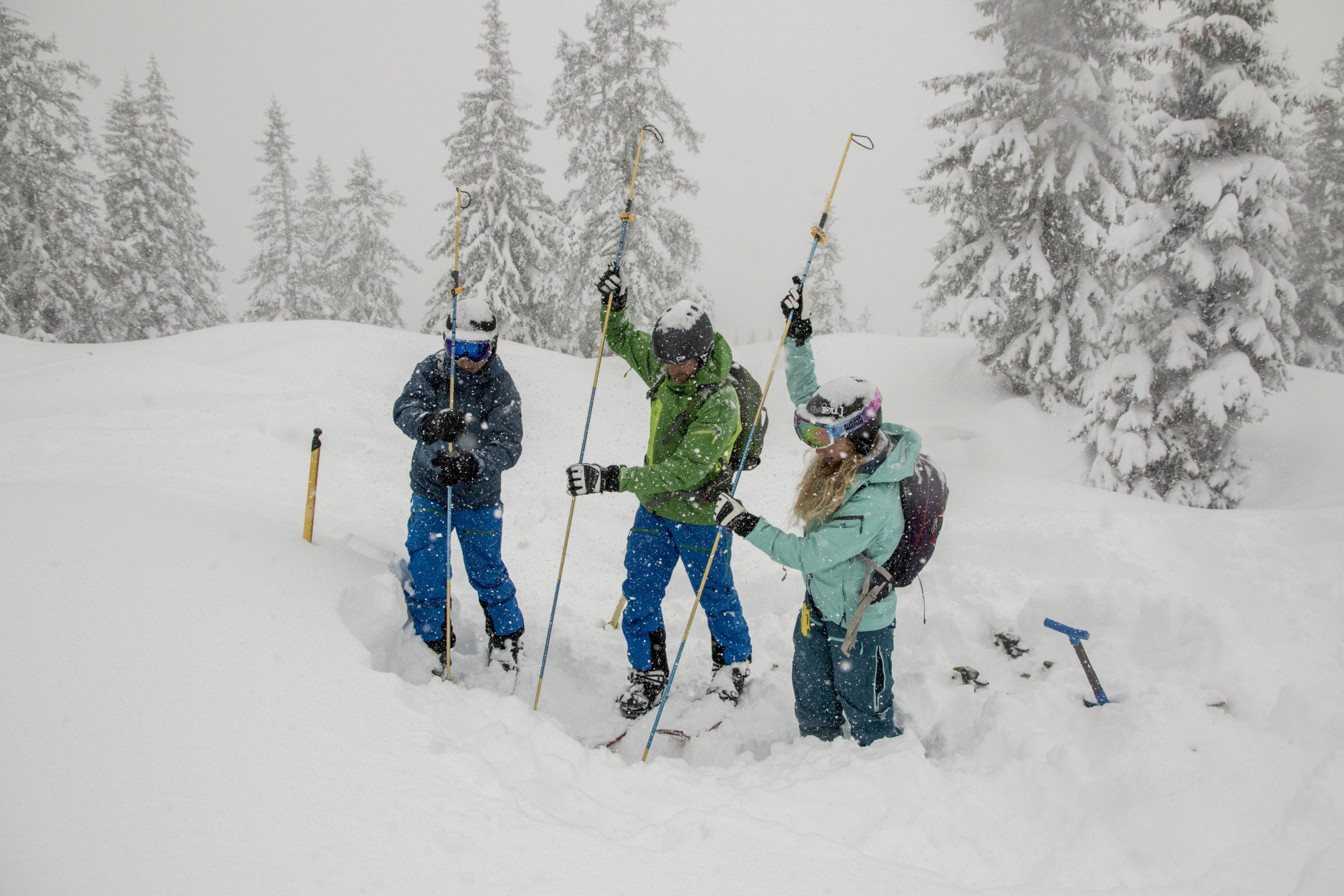

And not only ski touring is booming. Also snowshoeing or winter hiking. There are more and more players in a small space. If you really want to move sustainably and considerately in these areas, you need an understanding of the relationships and interactions in this ecosystem. In addition, a high level of personal responsibility, and - unfortunately often necessary - supplementary rules and steering concepts.
Education creates understanding
Many ski tourers are organized in the national alpine clubs and thus also informed about the problem areas. But the number of individual sportsmen and women is also increasing. Either way, it is unrealistic to assume that mere membership creates understanding for the natural environment. There is a difference, for example, between growing up in Kleinwalsertal and being on the move in the mountains with the local group from childhood on, and setting out from the city to go touring every now and then.
WinterFUN means being friendly, prudent & nature-friendly on the road
The German Alpine Club and various environmental associations therefore regularly launch campaigns to raise the environmental awareness of tourers. For example, the campaign "WinterFUN". FUN stands for "friendly, prudent, nature-friendly". This should determine our actions in the ski touring winter.
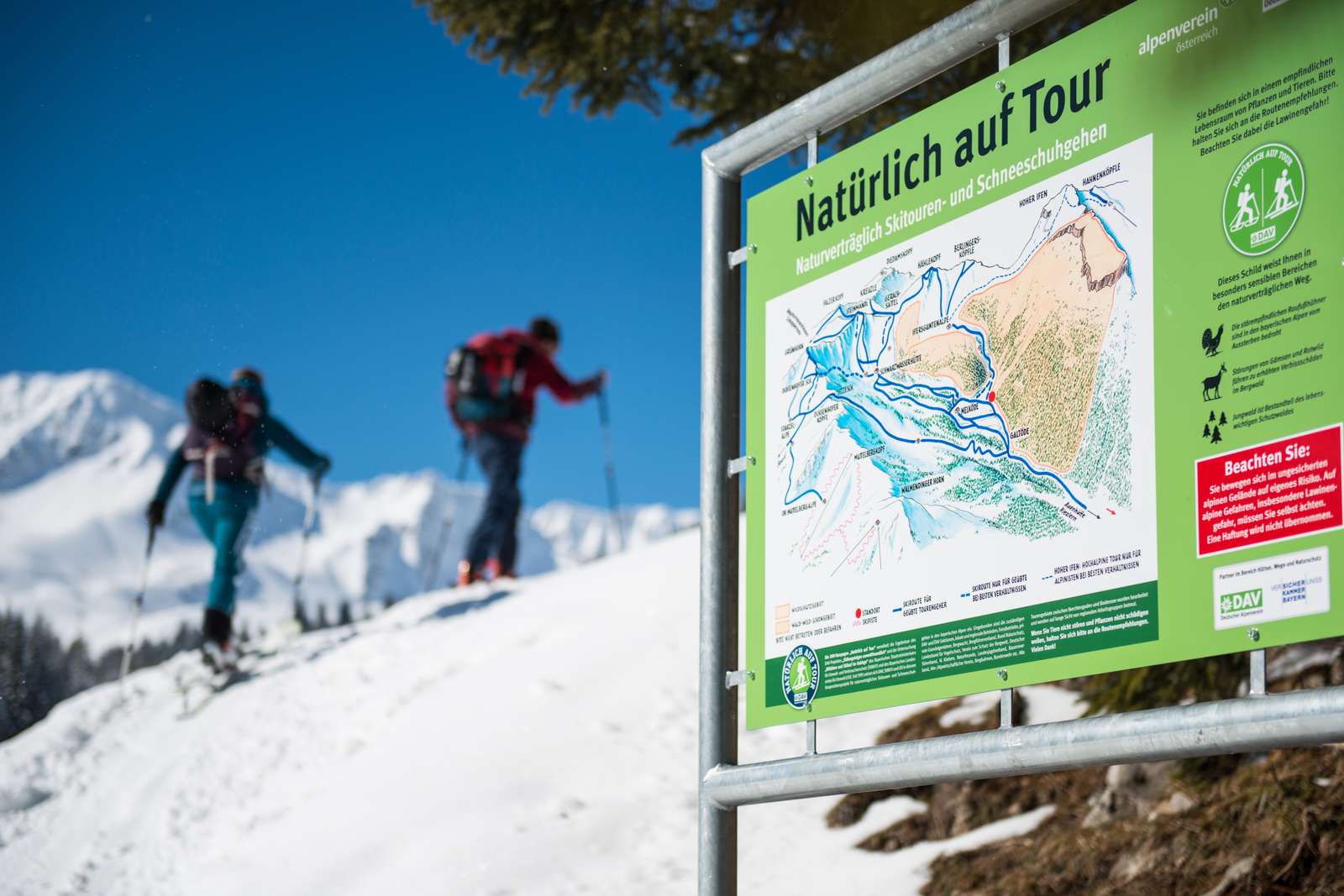

Remember remember: Sensitive plants live under the snow cover
We perceive negative influences on the vegetation in summer mainly through bare slopes, dying trees and mudslides. On ski tours we also come into contact with the vegetation in winter. Mountain pine fields, for example, should be avoided so that the ski edges do not cause any cutting damage. The same applies to reforestation areas. The young shoots are essential for the healthy growth of the trees. Snow-free areas are also best skirted entirely.
Sometimes it's just enough to cut off briefly and run over the spot. Pressure has little effect, but grasses, lichens and herbs cut off by ski edges are quickly destroyed. Especially in spring, you should therefore be careful not to ski down to the last patch of old snow. Of course, this also applies at the beginning of the season. Here, you should not set off at the first thin layer of snow, but wait until the vegetation has obtained a protective snow cover.
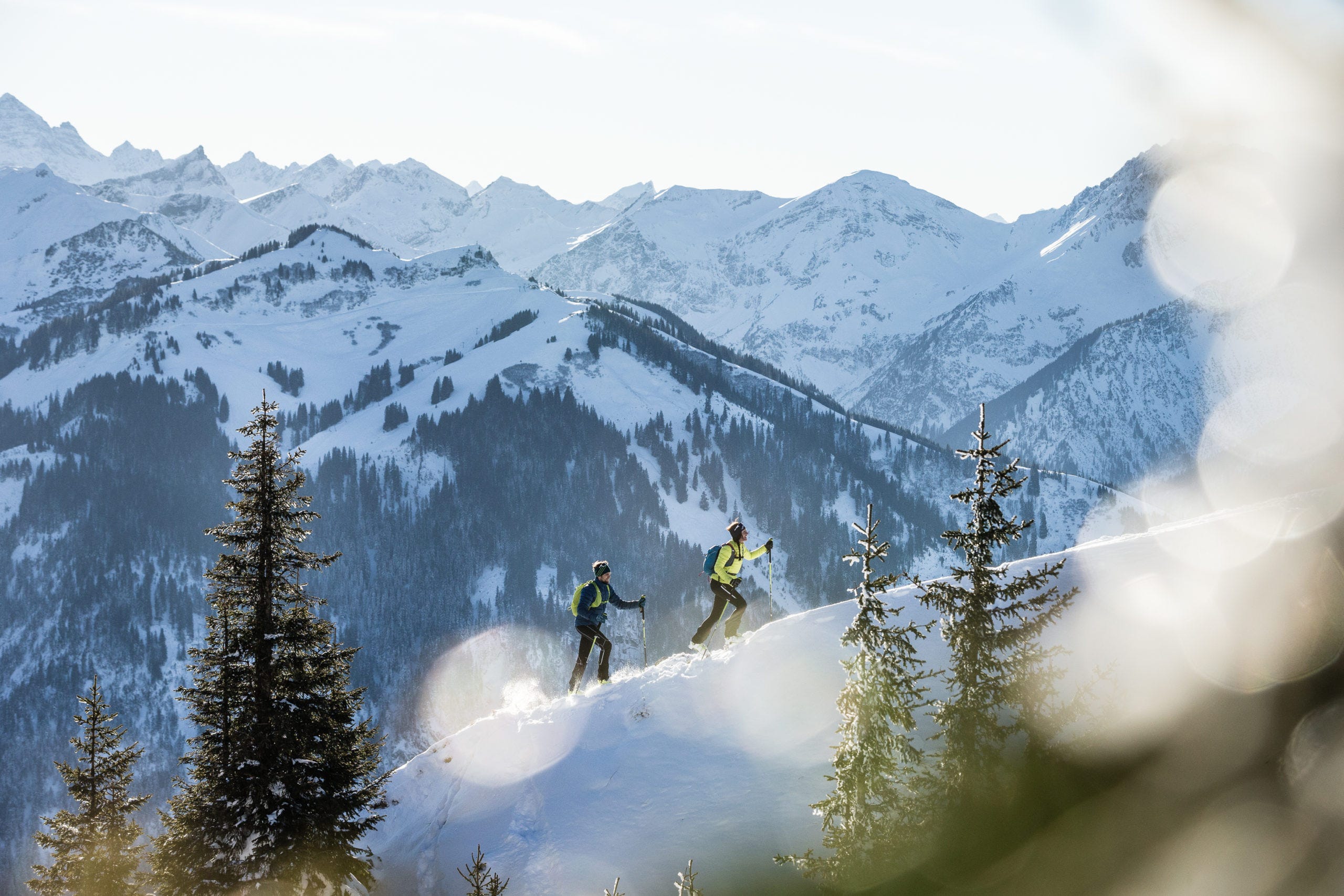

Take consider the habitat of wildlife when ski touring
When ski touring, we are increasingly encroaching on areas that are vital to the survival of wildlife as refuges and feeding grounds. This starts already in the valley areas. In the forest belt, for example, are the winter feeding places for red deer and roe deer. The former floodplain areas in the valleys are no longer available to them, and so they are dependent on this feeding in winter if one does not want to risk an increase in browsing on the trees.
The disturbance of such feeding areas quickly causes the absence of game and thus promotes browsing on bark and young trees. Initiatives for nature-compatible mountain sports, such as Naturally on Tour of the DAV (in german), also explicitly deal with the protection of wildlife. It is also becoming increasingly common to find appropriate information boards at the starting points of heavily frequented areas.
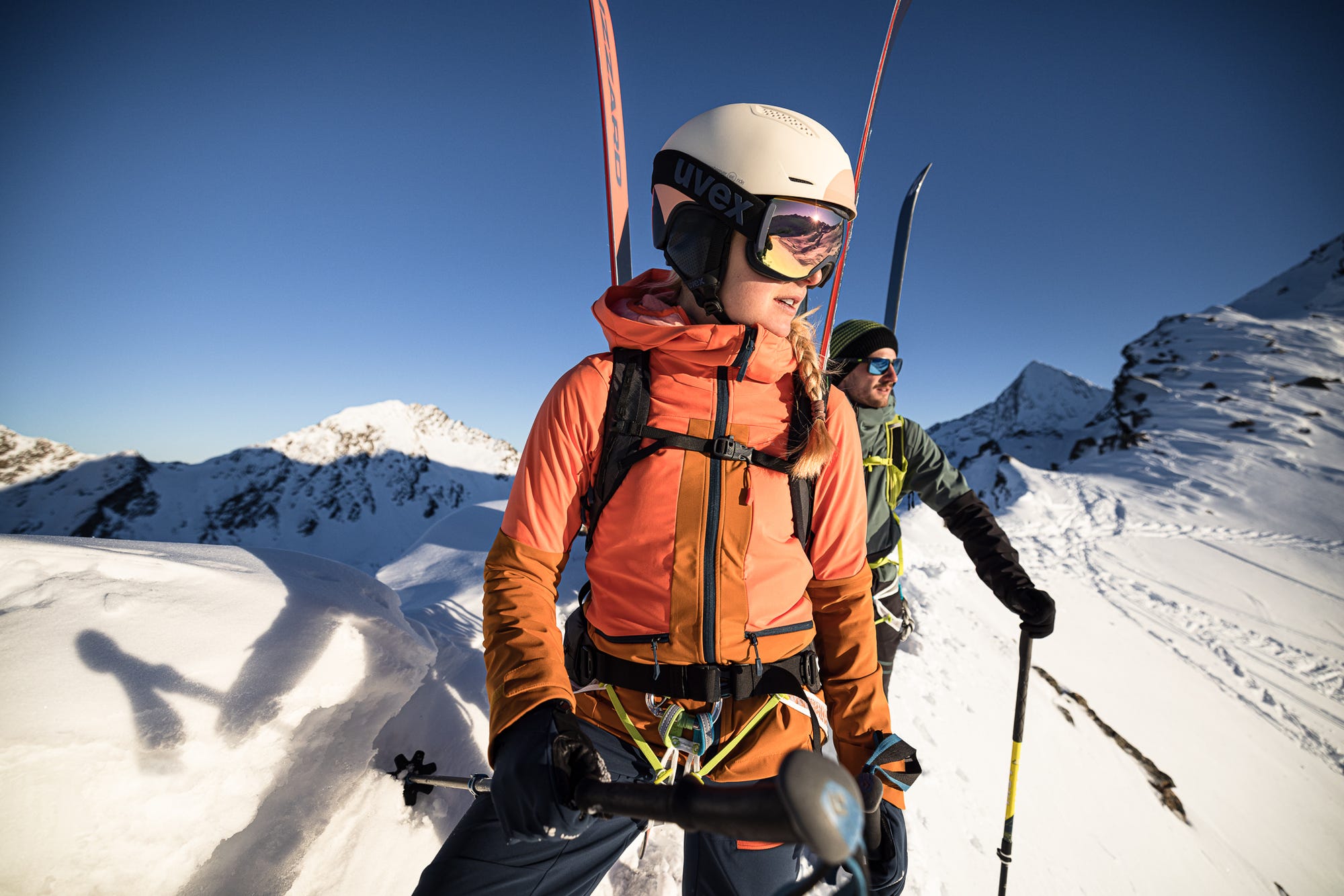

Chamois and rock deer do not feed. Its survival strategy is to save energy because food is scarce in winter.
If wild animals like chamois or ibex are regularly disturbed in their "energy-saving mode" and have to flee, they run the risk of eventually dying of exhaustion and hunger. If you see the shy animals, be happy about the rare sight and drive around them or wait for a short observation break until the animals have moved on.
A distance of about three hundred meters is a good rule of thumb, below that the animals start to flee. If possible, however, it may be more, because in the open and spacious terrain animals sometimes flee at greater distances.
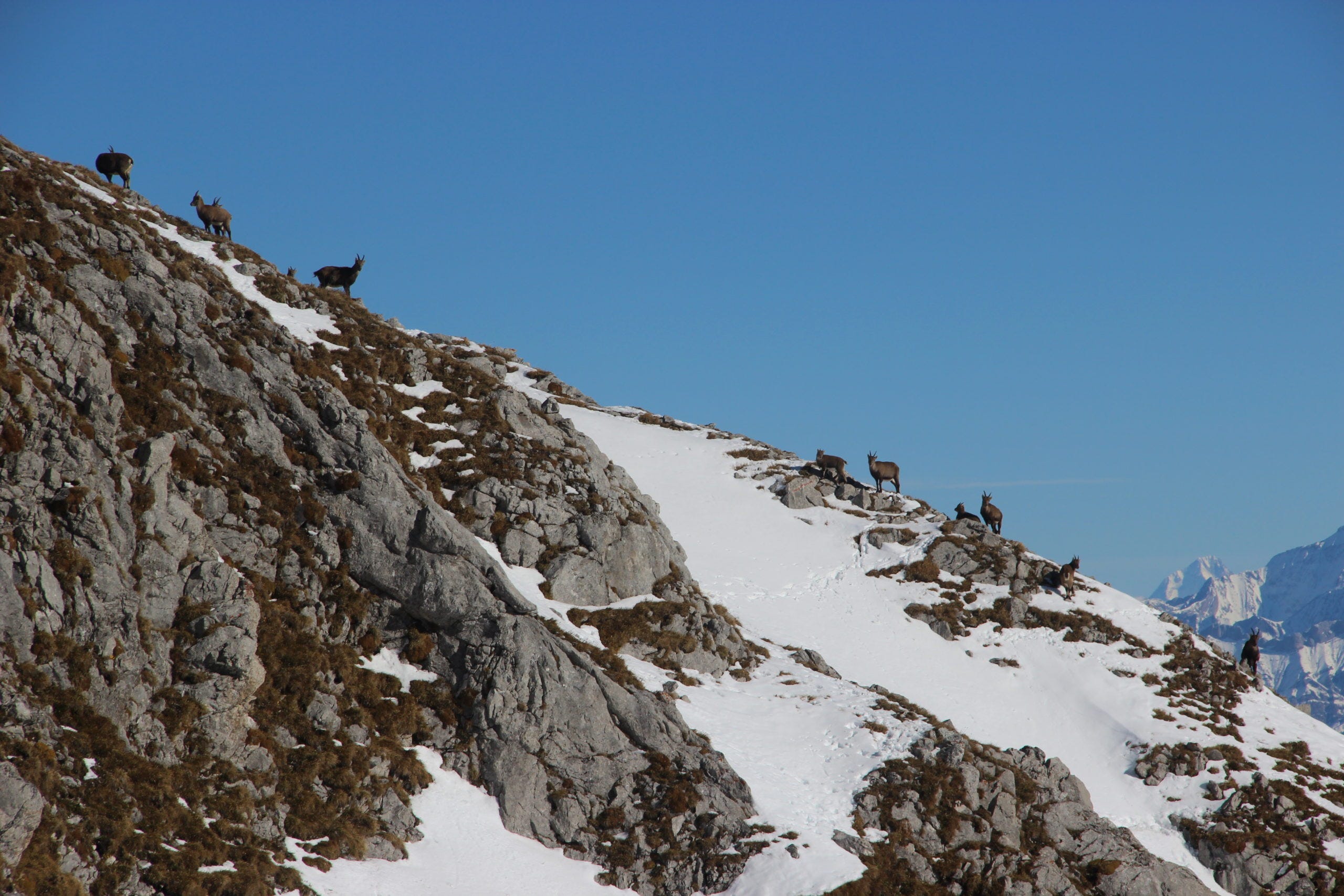

Even shy animals like the black grouse or the ptarmigan are endangered and depend on our consideration
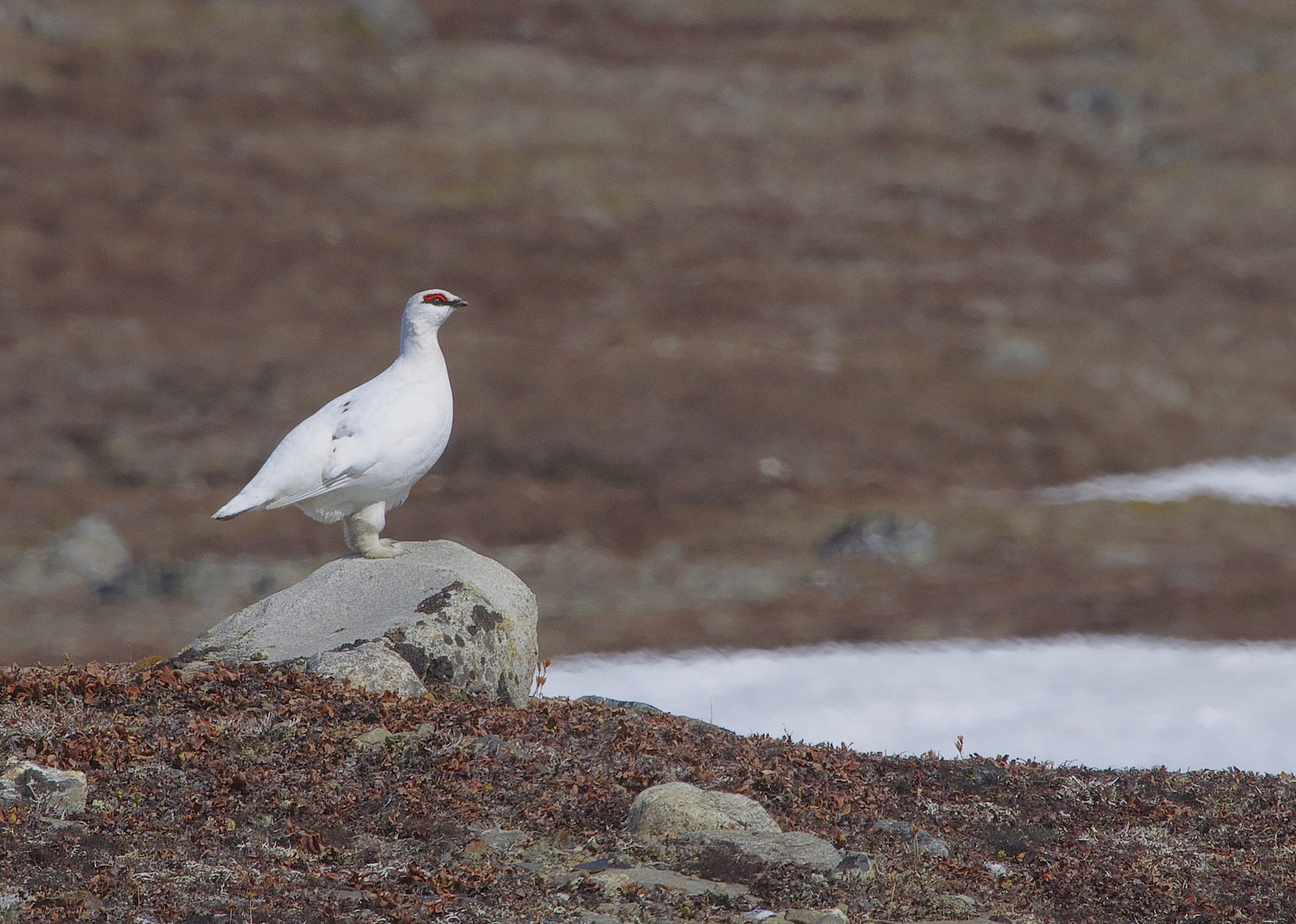

Grouse, such as the black grouse or the more familiar ptarmigan, bury themselves in snow caves or hollows they've scraped themselves, preferably on the ridges of north-facing slopes because the snow is usually looser here. They are only outside their burrows for a short time to feed and sunbathe. If they are startled there, they flee down the slope due to their weight and then have to climb back up again with high energy consumption.
If this happens frequently, they eventually starve to death or fall prey to their predators in the open spaces. The black grouse and its larger relative, the capercaillie, are also suffering from rapidly declining populations throughout Europe. The Alpine region is one of their last stable habitats in Central Europe.
Do not leave garbage in the nature
Do not leave garbage! You (over)read it so often on signs that you have to point it out again and again. Every piece of plastic can be interesting for animals and cause damage in the body. Especially in winter, when animals are weaker and hungrier. If no animal eats the plastic, it will eventually end up in the sea or even in the snow in the form of microplastic.
To prevent this problem from becoming even bigger, it's best to pack your things in reusable containers and fix your bags to your backpack. That way, nothing can be blown away. You can also be consistent when going to the toilet. It is best to bring everything back down to the valley. Paper handkerchiefs also take much longer to rot than toilet paper. And what is buried in the snow will still be there in the spring.
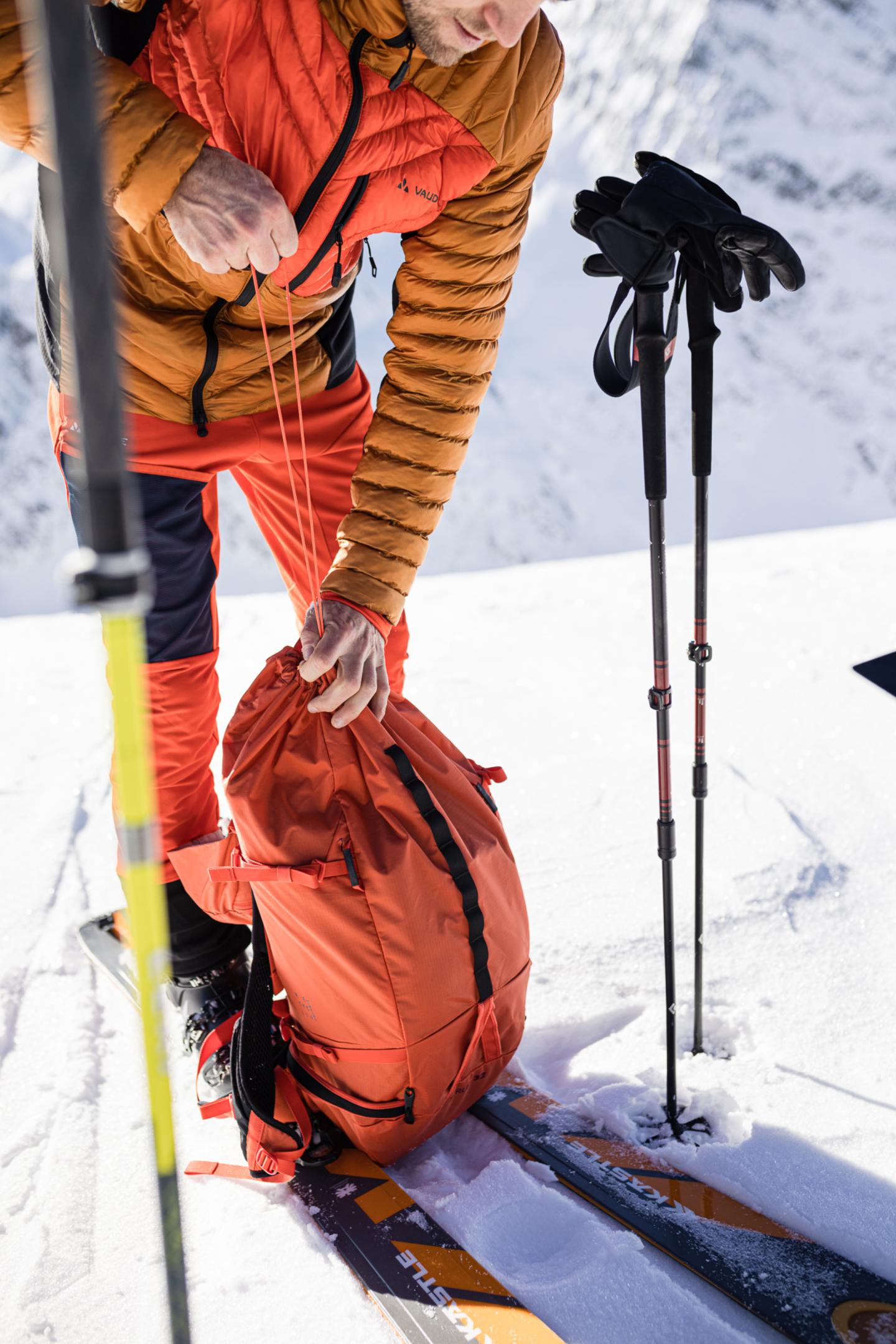

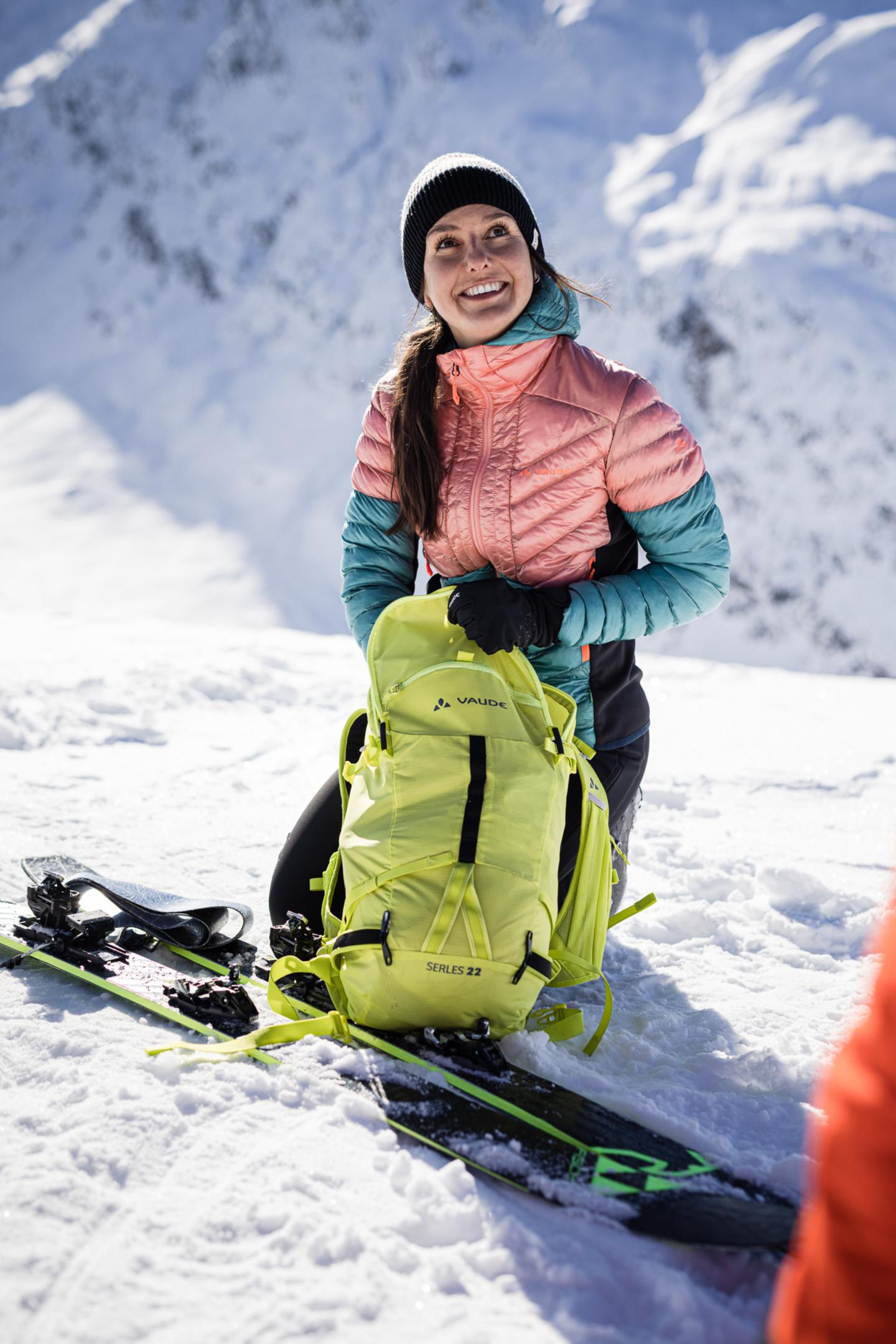

Organize your journey to the ski tour with buses and trains as environmentally friendly as possible
Traveling by public transport is the most ecologically sensible way to get to the mountains in winter. With the ICE this is possible via Munich, for example, from where the connections to the Alpine valleys are very well developed. For further planning, you then only need the regional bus connections, which also lead to almost every valley in winter through various ski buses.
The German Alpine Association gives here (in german) together with the railroad some tips for better planning. The Austrian Alpine Association (ÖAV) has even published a tour book with ski tours (in german) and the matching bus and train connections - this is available free of charge, including bus tickets to tear off!
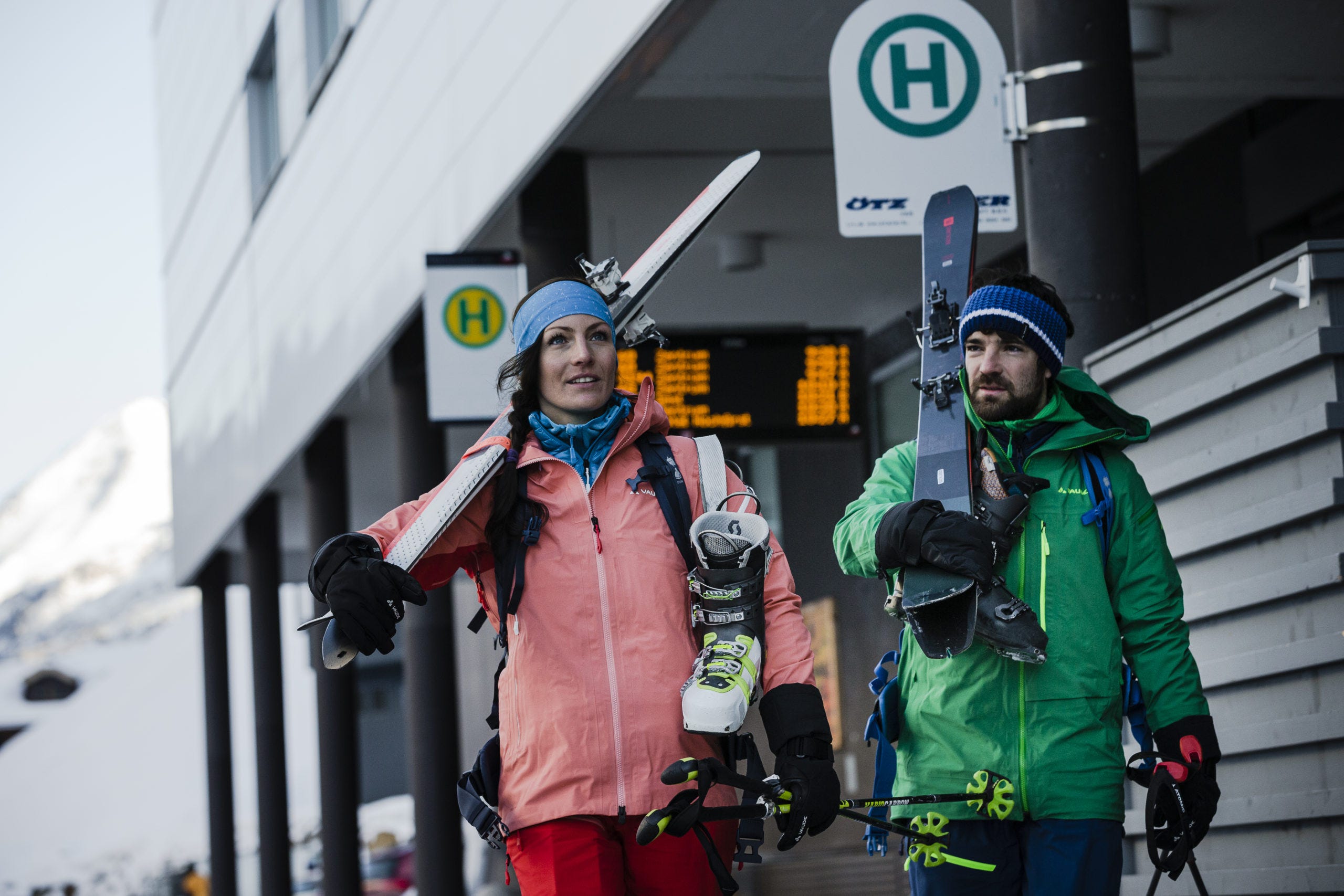

Renting ski touring equipment is also a contribution to sustainable winter sports
Renting ski equipment directly in ski resorts or in sports shops is common practice in many places, and it makes a lot of sense. Especially if you don't need equipment frequently or just want to try out a new sport, rental offers are a practical and above all sustainable thing to do.
Because we like the idea of sharing, we offer a rental service for many products. We don't have skis in our range, but we do have clothing and backpacks for ski touring. Just take a look at VAUDE Rent (in german).
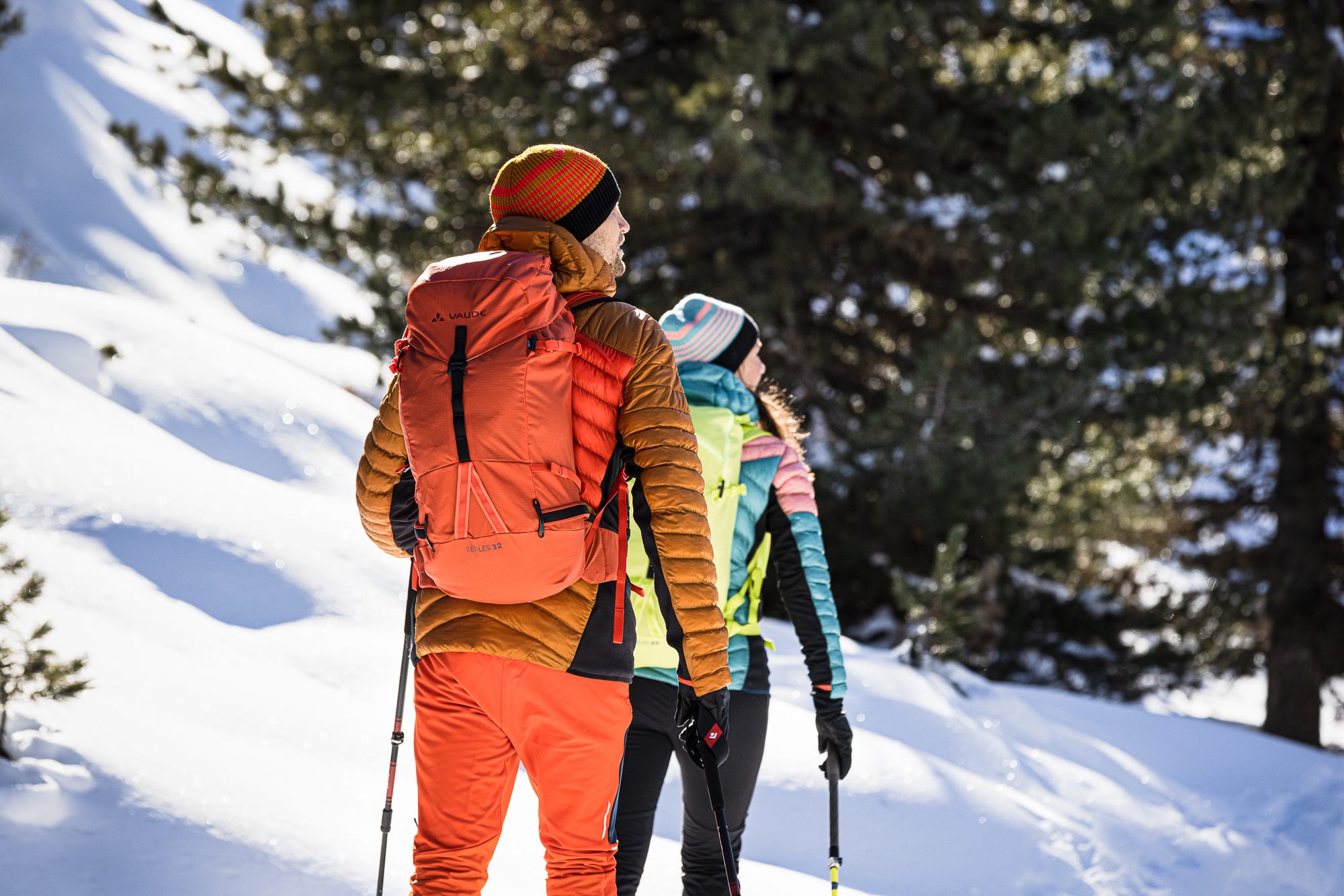

Rent products instead of buying
With our rental service VAUDE Rent you can rent clothing and backpacks for ski touring.

